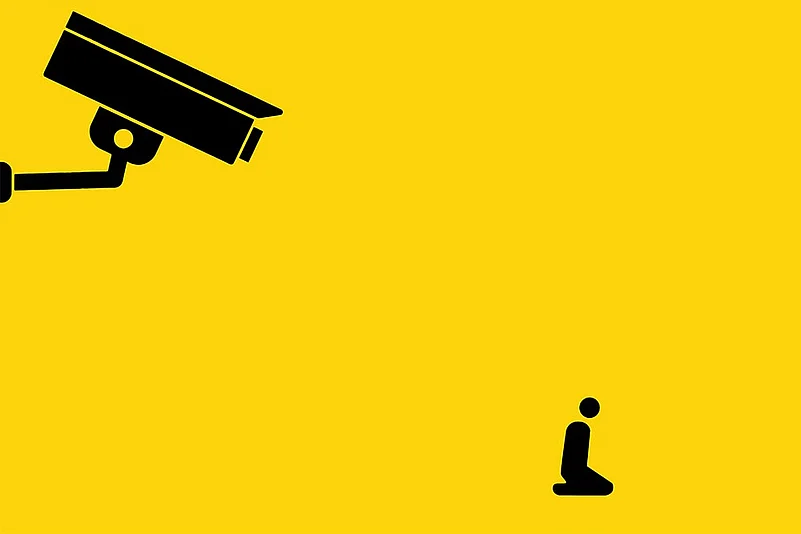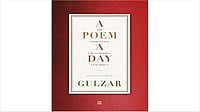I have always wondered how one is supposed to look like one’s religion. Save for outward tokens such as a turban or a topi, a beard or a burqa, how can one give instant proof of one’s religious beliefs? Yet, growing up in Delhi, all through one’s school, college, university, while negotiating an assortment of jobs and offices, not to say myriad social occasions, I have heard this comment delivered in tones ranging from surprise to approval. With time, I have understood, the speaker is trying to give me a back-handed compliment. Since I don’t look like a Muslim, I am ‘okay’, I am not quite one of ‘them’—the bomb-throwing, beef-smuggling, jehad-spouting Muslim of popular imagination. By extension, I might even—at a stretch—be considered one of ‘us’.
So, I don’t look like the Muslim of general perception. For one, I don’t have a beard, nor do I wear surma in my eyes and a skull cap on my head. I may be forgiven for that, since I am not a man. But I also don’t conform to most people’s idea of a Muslim woman. I sound like anyone else raised in Delhi, snobbish as we are—in south Delhi to be precise. I dress no better and no worse than any woman of my social class, not to mention age. I wear my hair short, uncamouflaged by the hijab. In short, I look like any average Delhi person.

Yet I have this other layer to my being, another skin you might call it; that is my Muslimness. That other skin gets revealed every now and then when I break into chaste Urdu or am outraged when Muslim youth are pulled out of buses and trains, beaten and killed; or express horror at our apathy towards the Rohingya crisis or puzzlement at those who equate vegetarianism with non-violence and vice-versa. In my mind, there is no duality. I am a Muslim and an Indian in no particular order. I am both. What is more, I see no reason to be either embarrassed or defensive if some random Muslim youth decides to join the ISIS (whose numbers, incidentally, are minuscule) or, for that matter, cheer for Pakistan when it wins a cricket match (though given its present team such INStances are increasingly rare, in my childhood Pakistan won more matches than it lost). Then, of course, there is my second name, which is a dead give-away of my being ‘Mohameddan’!
Far from camouflaging my identity, I want to celebrate being an Indian and being a Muslim. And I wish to do so in the only way I know—through my writings. What is more, and this I want to say as clearly and as loudly as I can, I am not a minority within a minority. I am the voice of the Muslim middle class, a fairly new entity but a sizeable one in the seven decades it has taken to grow since its numbers were completely decimated in the Partition of 1947. And it is this large entity, that the world, and India in particular, must acknowledge and learn to deal with. What is more, Indian Muslims are not all cut from the same cloth; they are marked by regional and ethnic differences, not to mention the very obvious ones of social class, financial standing and education. A great many among this vast heterogeneous mass are practising Muslims or even devoutly religious, yes, but even they are far, far removed from the wild-eyed Islamists dreaming of a pan-Islamic umma. Given the Muslim population is roughly 172 million, save for the stray IS sympathisers, in my considered opinion, the overwhelming majority does not show any propensity towards terrorism. Also, the idea of converting India from a Dar-ul-Harb (‘land of unbelievers’) to a Dar-ul-Islam (‘land of Islam’) through whatever means available to them lies more in the minds of right-wing Hindu extremists than Muslims.
Be it films or popular culture, the demonisation of Muslims has only increased their sense of isolation and victimhood. In pre-globalisation India, the film industry routinely depicted Muslims as smugglers or as paan-chewing, surma-wearing hoodlums dressed in pathan suits or as qawwali-singing debauched men who divorced their wives for the most frivolous of reasons. Post-liberalisation, these caricatures were replaced by sinister dons sitting in West Asian havens planning the destruction of Indian cities and, more recently, as tech-savvy but devout Muslims who have been radicalised and turned into cold-blooded jehadists. Subtly but surely, several motifs have crept into the public discourse such as: the strategic entrapment of Hindu girls by Muslim boys as part of a larger game-plan dubbed ‘love jehad’; the blithe disregard for Hindu sentiments in killing and consuming cows for meat; the sheer nuisance of causing a law-and-order situation every Friday when Muslims congregate in large numbers and listen to khutbas about all sorts of regressive things such as ‘don’t-take-your-kids-for-polio-shots’ or ‘don’t-put-your-money-in-banks-as-interest-is haraam’; their refusal to sing Vande Mataram in a blatant display of their innate anti-nationalism, and so on and so forth.
While the entire Muslim community has suffered as a result of this steady infiltration of misconceptions and piling up of images and ideas, each more offensive and alienating than the other, a culture and way of life too has suffered due to this stereotyping. Urdu, which has no mooring in Islam, is identified with all Muslims, completely ignoring the fact that Muslims in Kerala speak Malayalam, those from Assam speak Asamiya and so on. Popular culture has long depicted Urdu poets and nawabs as sorry creatures steeped in nostalgia and pathos or, worse still, romanticised shervani-clad heroes and heroines in ghararas in what were once euphemistically called ‘Muslim socials’. When not banal or limiting, some depictions are outright offensive, such as the recurring representation of Muslims as pillaging invaders who looted and burnt temples or lascivious medieval sultans lusting after chaste Rajput queens, when not tearing off chunks of raw meat with their bare teeth like savages. Is this forsaking of reality for an erroneous perception not tantamount to aggravated assault? Is this deliberate othering not a form of violence, a violence to the mind and spirit? And what of the actual spike in communal violence and the increase in the number of hate crimes? And the vigilantism that has spiralled out of control from a carefully orchestrated anti-beef hysteria?
So, how are the Muslims responding to this violence around them, one that is systematically directed against them? What answer can they give when Union ministers claim that profits from (Muslim-owned and allegedly illegal) slaughterhouses are directed to fund terrorist activities? Or, when the Taj Mahal is written off by an MLA for being “a blot on the nation”, built as it is by “traitors”? And so it goes on. The Indian Muslim is scared and silent, cowed down by the scale and strength of the violence all around. S/he is waiting for the Hindu brethren/sorority to speak up. Even at the occasional protest march, s/he is fearful to be seen holding up a placard that says ‘Not in My Name’ or ‘Break the Silence’.
Barq girti hai to bechare Mualmanon par (‘Lightning strikes only on the Muslims’), wrote Allama Iqbal in his long poem addressed to God, titled Shikwa (‘Complaint’). And indeed, for a century-and-a-half to be precise, since the brutal aftermath of the First War of Independence of 1857, Indian Muslims have been labouring under a sense of siege, of being persecuted and punished for the sins of their fathers, of being wrongly accused of sins of omission and of being at the receiving end of all sorts of indignities, humiliations, violations. In the years after Partition, accused of being traitors whose rightful place was on the other side of a border that their forefathers had helped create, they were reduced to pawns in a game of electoral politics. The elections of 2014 held up a mirror to the Indian Muslims; the results proved more effectively than any rhetoric about how marginalised they have become and how ineffectual in the larger scheme; when it comes to a game of numbers, the Muslim vote amounts to nothing. The effacement from the body politic seems total.
Clearly, there is much Indian Muslims need to do to better their lot, to be more integrated and more upwardly mobile in a purely socio-economic sense. The indices on which they falter, which were so ably pointed out by the Sachar Commission report, are too obvious to be quibbled over. What is equally important is for the rest of the country, and especially the Hindu majority, to adjust the lens through which they view Muslims. There is an urge, as widespread as it is unarticulated among the Muslims of India, to be seen for who or what they are—no better or worse than their neighbours and peers, with no especial propensity towards violence, nor any inherent violent tendencies brought on or encouraged by their faith. The binary of bharatiya and videshi, sanskari and ku-sanskari constantly thrust in their faces is not only hurtful and untrue, but reinforces stereotypes and pushes Muslims further to the margins. Far from being perpetrators of violence, they see themselves as victims of violence. For India to retain its health and vigour as a plural society, this imbalance must be recognised, and addressed.
Postscript: When asked to contribute to this year-end special issue, my editor and I initially toyed with the idea of an article on Sufism, the kinder, gentler face of Islam and therefore the seemingly more benign and more acceptable and accepting version of a religion that is generally associated with terror and violence. But that seemed like an easy, and predictable, way of dealing with the ‘problem’ of violence vis-a-vis India’s Muslims. Eventually, we decided to take the bull by the horns and address the issue of Muslims in India and the violence that is all around them.
Rakhshanda Jalil is a writer, critic and literary historian


























